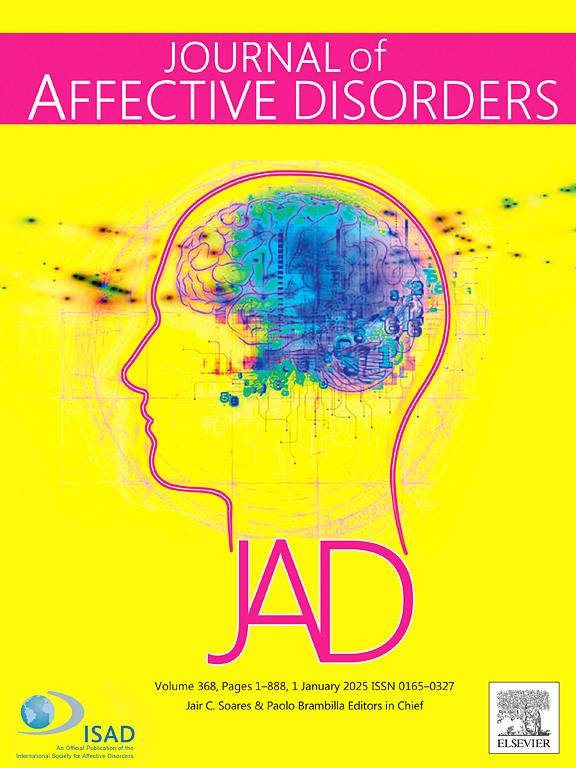Factors associated with subjective well-being of Chinese older adults with cardiovascular diseases based on the health ecological model
IF 4.9
2区 医学
Q1 CLINICAL NEUROLOGY
引用次数: 0
Abstract
Objective
The objective of this study was to analyze key predictors of subjective well-being (SWB), an important psychological indicator reflecting quality of life, of the elderly with cardiovascular diseases (CVDs) in China using a representative nationwide sample.
Methods
The data were taken from the China Health and Retirement Longitudinal Study (CHARLS) 2018, and candidate predictors were determined based on the health ecological model (HEM).Chi-square test, t-test, and binary logistic regression was used to investigate the predictors of SWB of the participants from the personal, behavioral, interpersonal, life and work-related, and policy aspects. Finally, the random forest model (RFM) was used to determine the relative importance of the predictors.
Results
The participants' SWB were negatively associated with age (OR = 0.986, P = 0.024), actual sleep average hours for one night (OR = 0.946, P = 0.003), average minutes take a nap after lunch (OR = 0.998, P = 0.015), higher education (OR ranges: 0.220–0.319, P range: 0.005–0.040) compared with elementary school and below; The participants' SWB were positively associated with being ethnic minority (OR = 1.504, P = 0.003), and number of comorbid conditions (OR = 1.117, P < 0.001). Based on the RFM model, the top six of the predictors were age (230.968), actual sleep average hours for one night (159.951), average minutes take a nap after lunch (138.571), number of comorbid conditions (115.847), education (50.784), and ethnicity (23.575).
Conclusion
The top six predictors of SWB of the elderly with CVDs in China were age, actual sleep average hours for one night, average minutes take a nap after lunch, number of comorbid conditions, education, and ethnicity.
基于健康生态模型的中国老年人心血管疾病主观幸福感相关因素
目的利用具有代表性的全国样本,分析反映老年人心血管疾病(cvd)生活质量的重要心理指标——主观幸福感(SWB)的主要预测因素。方法数据来源于中国健康与退休纵向研究(CHARLS) 2018,基于健康生态模型(HEM)确定候选预测因子。采用卡方检验、t检验和二元logistic回归从个人、行为、人际关系、生活与工作、政策等方面探讨被试主观幸福感的影响因素。最后,使用随机森林模型(RFM)来确定预测因子的相对重要性。结果被试的主观幸福感与年龄(OR = 0.986, P = 0.024)、每晚实际平均睡眠时间(OR = 0.946, P = 0.003)、午餐后平均午睡时间(OR = 0.998, P = 0.015)、学历(OR范围:0.220 ~ 0.319,P范围:0.005 ~ 0.040)呈负相关;受试者的主观幸福感与少数民族(OR = 1.504, P = 0.003)、合并症数量(OR = 1.117, P <;0.001)。基于RFM模型,预测因子前6位分别为年龄(230.968)、每晚实际平均睡眠时间(159.951)、午餐后平均午睡时间(138.571)、合并症数(115.847)、教育程度(50.784)和种族(23.575)。结论中国老年心血管疾病患者SWB的前6个预测因素为年龄、每晚实际平均睡眠时间、午餐后平均午睡时间、合并症数量、教育程度和民族。
本文章由计算机程序翻译,如有差异,请以英文原文为准。
求助全文
约1分钟内获得全文
求助全文
来源期刊

Journal of affective disorders
医学-精神病学
CiteScore
10.90
自引率
6.10%
发文量
1319
审稿时长
9.3 weeks
期刊介绍:
The Journal of Affective Disorders publishes papers concerned with affective disorders in the widest sense: depression, mania, mood spectrum, emotions and personality, anxiety and stress. It is interdisciplinary and aims to bring together different approaches for a diverse readership. Top quality papers will be accepted dealing with any aspect of affective disorders, including neuroimaging, cognitive neurosciences, genetics, molecular biology, experimental and clinical neurosciences, pharmacology, neuroimmunoendocrinology, intervention and treatment trials.
 求助内容:
求助内容: 应助结果提醒方式:
应助结果提醒方式:


